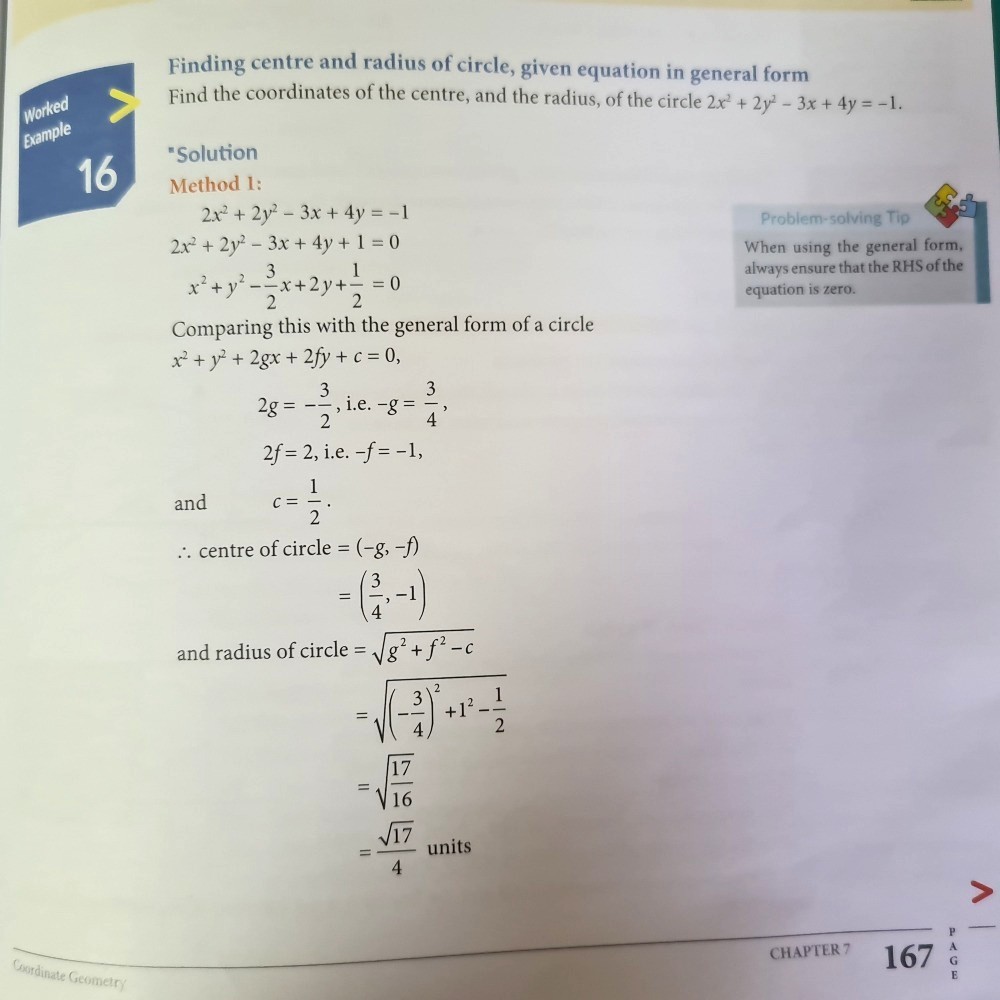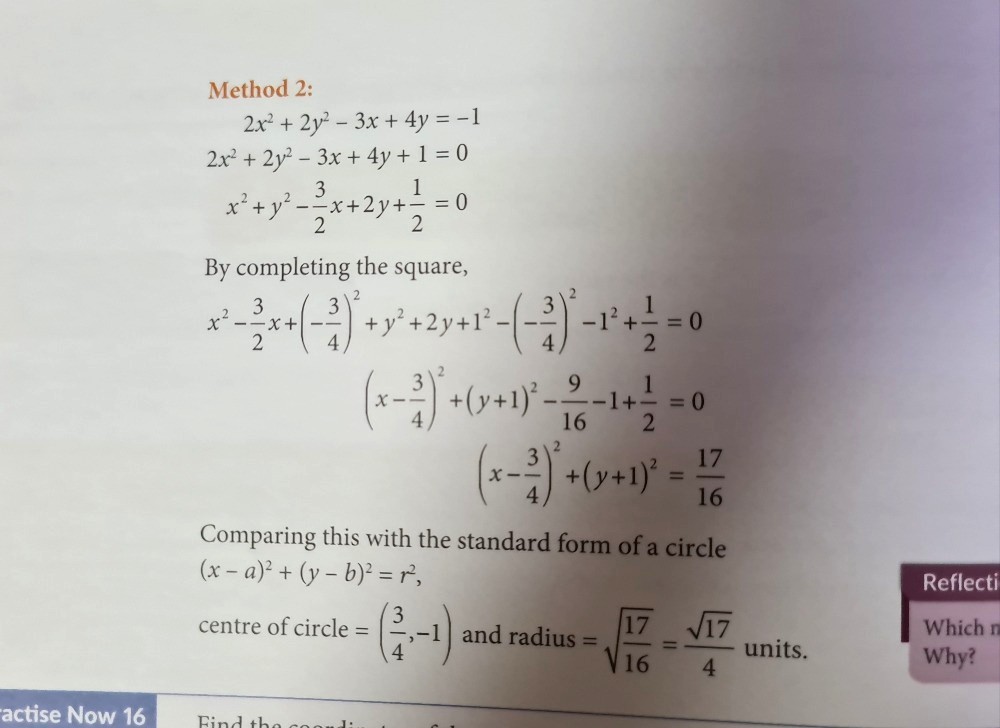Ask Singapore Homework?
Upload a photo of a Singapore homework and someone will email you the solution for free.

Question
secondary 3 | A Maths
2 Answers Below
Anyone can contribute an answer, even non-tutors.

can someone explain what is going on in yhis qn? dont really understand whats the general form too, btw look at the comments for the 2nd pic of this qn
①At any point (x,y) on the circumference, you can always draw a line from the circle's centre to it. No matter which point you pick, this line is always a radius of the circle.
②you can always form a right-anglead triangle with the following three :
(a)The radius
(b)Either the x or y - axis
(c)A horizontal or vertical line
(a) is the hypotenuse of the triangle.
The 3 vertices of the triangle are the centre, a point on the y/xaxis, and the point on the circumference.
By Pythagoras' Theorem,
a + b² = c²
For this triangle,
a is the horizontal distance between the centre and the point on the circumference.
b is the vertical distance between the centre and the circumference.
c is the radius (length of the hypotenuse)
For any point (x,y) on the circumference of a circle with a centre (a,b) and radius r,
The horizontal distance between it and the centre = (x - a) units
The vertical distance between it and the centre = (y - b) units
(Now you may get a negative value for them depending on the point chosen. but it doesn't matter as we are only interested in its absolute value.)
We can form a right angle triangle with sides (x - a) units, (y - b) units and radius r units.
Using Pythagoras' Theorem,
(x - a)² + (y - b)² = r²
Notice how the negative values are now positive since they have been squared.
The general form is merely the expanded form.
x² - 2ax + a² + y² - 2by + b² = r²
x² + y² - 2ax - 2by + a² + b² - r² = 0
Rewrite as
x² + y² + (-2a)x + (-2b)y + (a² + b² - r²) = 0
if you compare this to the one given in the textbook,
x² + y² + 2gx + 2fy + c = 0
Comparing coefficients,
-2a = 2g →a = -g
-2b = 2f → b = -f
So the coordinates of the centre is simply (-g,-f)
c = a² + b² - r²
r² = a² + b² - c
r = √(a² + b² - c)
Then you compare the coefficients to find your radius and centre.
See 2 Answers


the general form of a circle is (x-a)^2 + (y-b)^2 = r^2, where r is the radius of the circle. this general form is in completed square form. i guess what the worked example general form means that when u expand the completed square form. to find the radius just make r the subject. i only learnt this in JC though
hope this helps!





